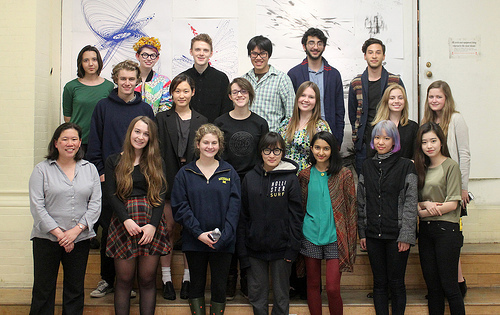Yes, I really do read my student course evaluations
Between grading and final critiques, the end of the semester is always a very stressful time for everyone. Students are usually at their peak of exhaustion, and faculty are generally scrambling to complete grading and final critiques. In the midst of this avalanche of work, the ritual of student course evaluations reliably emerges on the last day of class.
As a student, when I filled out course evaluations, I never thought twice about what I had written. I didn’t think that what I wrote would ever have any kind of impact. Many students don’t invest the time to write in depth course evaluations, largely because they simply don’t believe that their professors will take the time to actually read and consider what they wrote. I’m here today to tell you that on the contrary, what you write matters.
Reading my course evaluations means voluntarily getting on the world’s most dramatic, emotional roller coaster ride. To prepare myself, I always make sure that I read my course evaluations at least 3-4 weeks after I have submitted grades. This ensures that I have some distance from the semester. I set aside a good chunk of uninterrupted time so that I can sit and read through the course evaluations slowly and carefully. Then, I take a big, deep breath, and start reading.
The range of comments I’ve received over the course of my teaching career is extraordinarily vast. Students have written beautiful, moving comments that have made me all verklempt. I have literally laughed out loud: a student once wrote that she found herself thinking about her projects for my class all the time, even when she was out partying. Back when course evaluations were handwritten on paper, I had one student hand write “10″ next to the rating scale which was set at 1-5.
I know that I will never be every student’s cup of tea, so it’s basically guaranteed that there will be criticism. I’ve gotten harsh comments that I have to try really hard not to take personally. Despite my reputation as a slave driver at RISD, the reality is that I am just as sensitive as everyone else. I will admit that some of the comments can be hard to swallow. One of my colleagues told me that when he first started teaching, he was startled at how self-conscious teaching made him feel. Reading your course evaluations is essentially the equivalent of multiplying that self-consciousness by a million. And if I wasn’t already self-conscious enough, there is also the occasional remark about my haircut and appearance. When I was pregnant, this was frequently noted in my course evaluations. One student wrote: “she’s pregnant and she’s more on top of it than my other teachers.”
Once in a while, I’ve had comments that were just outright false: someone once accused me of grading on a curve, a practice that I have never implemented in my teaching, and never intend to. The most common complaint in my course evaluations? That I don’t allow students to listen to their music with headphones during my class. (Sorry, that’s one policy that is never going away.)
As tough as it can sometimes be to read my course evaluations, I still find them important in my teaching process. I take time at the end of every semester to think about what changes I can make to the course, and the course evaluations are a good starting point for that inner dialogue. The evaluations provide me with a sense of perspective on the course that I wouldn’t be able to gain on my own, and in the past have stimulated concrete changes in my course materials. I still feel like I’m going to hyperventilate when I anticipate reading my course evaluations, but it’s a process that I am willing to go through for the sake of the positive changes that can happen as a result.






